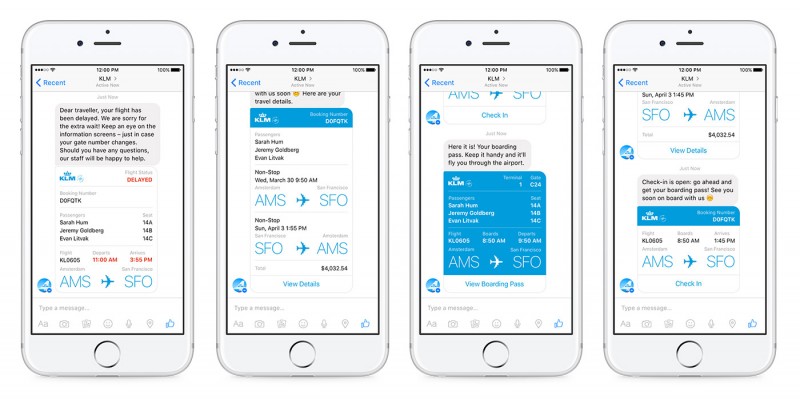The 5 golden rules when you want to make a chatbot
The 5 golden rules when you want to make a chatbot
Chatbots are getting popular: hundreds of websites and webshops are already using them, plus now they are also available for the Messenger app. Are you planning to build one into your website, too? Here’s what you have to be aware of.
Why a chatbot?
By using chatbots, a new form of communication opens up for businesses, because this way users can interact with the company. A chatbot can improve the user experience a great deal (especially compared to the one-way communication methods that have been available, like e-mails when there is no response straight away) - since the user can get a reply to their question as soon as possible.
It is also worth it to think about that today when big companies flood people with advertisements, chatbots make it possible to communicate with your customers one by one - instead of creating a “one-size-fits-all” ad. There are already a few sophisticated advertising techniques and targeting possibilities, so you can reach a give audience - that’s a fact. But personal communication to a person-like AI which knows the user and can help them reach their goals can build trust and encourage commitment to the company. Nowadays, you don’t even need a customer service team - a chatbot can handle it all.

What do you need to pay attention to when making a chatbot?
Because of the reasons mentioned above, a chatbot is not only an excellent communication method to reach out to our existing or to-be customers, but it will also become part of your company’s brand. That’s why it must be treated as a priority.
We have put 5 tips together for you to be able to make a chatbot that does not only fit your goals but your clients will like it, too.
1. Know your goals
Before you start doing anything, ask yourself this question: what are clients going to use the bot for? There are different types of chatbots, and your goal is one of the factors that determine which type to choose.
- Conversational bot:
This type of chatbot has only one purpose: to chat with the client. But this type is not recommended to anyone, beacuse a lot of development, work and time is needed to make the bot have the ability to converse just about anything. - Search bot:
This type of chatbot helps the user find information (on the website itself or across the whole Internet). The difference between this and a basic search engine is the fact that instead of a list of search results, the user gets the information during in the form of a conversation. This type of bot can be very useful for webshops. - Complex bot:
A complex bot is capable of both things mentioned above. To make this kind of bot, you need a lot of competence and development experience.
As you can see, you have to pay attention to the way you start developing a chatbot. First you always have to have an idea of what you’re going to use it for once it’s ready. And then, you can concentrate on...
2. The design
It is not enough if you know what a chatbot can be used for. You also have to find out how real users will use it - this will determine the user interface and the design. The most important thing is testing: draw up every single possibility of user interactions and questions to the chatbot. The appropriate design will be of help in this area. If you already know your goals and you have also planned the user experience, you can start the development work.
3. What is your chatbot’s personality be like?
It is very important to determine what kind of personality you’re giving your chatbot. The relationship between the bot and the user can be the key to the success of a business. So it is crucial for it to have a personality which builds trust in whoever is talking to it. Therefore you have to have an idea on how the bot should “approach” the user. Another but equally important aspect is not lying to your clients - do not make them think they’re talking to a real employee when there is actually just a chatbot on the “other side.” Last but not least, your chatbot should represent the style and personality of your brand. It would be an amateur mistake to make your chatbot sound young and like a “cool kid” while elsewhere on your website you represent an academic style and prestige.
4. What can a chatbot give you?
The user comes first - but do not forget about your business goals, either. Chatbots are perfect if you want to collect data on your users. So before the real development begins, make a list of what types of data you need in connection with your clients. Are there more men or women among them? Make the chatbot ask them, or draw the conclusions from their answers. Do you have a webshop and want to make statistics about your clients’ buying habits? The chatbot can handle that, too. Show your users a few products and ask them which one they like best.
By getting these data, you are not only able to make valuable and interesting statistics about people interested in your website, but later on, when one of them visits the website again, you can give the even more personalised offers and information. So before you build a chatbot into your website, compile a list of the data you want to collect.
5. Plan it, plan it, plan it
… and by saying this, we’re thinking about the execution and the marketing of the chatbot. Lots of people make the mistake of thinking about making a marketing plan only after the development work is done. However, if you don’t have a plan for after the chatbot is ready, all the development work might have been in vain - since you cannot reach the appropriate audience.
All in all, it is very important to determine who your audience is and who are going to communicate with your chatbot (of course this is also important when you’re planning the voice and personality of the bot). Think about the marketing solutions you are already using: are you on a social media site? Do you already have an audience who you can target when advertising your new feature? If you do not have one - or even if you do but wish to reach even more people, you should specify who they are and also consider launching paid ads.
Start small: assess the interest of your market and feel free to ask the users questions about what they would like. This way you cannot only take advantage of the opportunities of advertising but you can also improve your chatbot based on the opinions.
Everything ready?
Then there is nothing left to do: make your own chatbot and watch how your customers are using it more and more comfortably while having a less stressed, more useful customer service.


